Recent Landscapes
As I continue to focus
on “painting in papers”
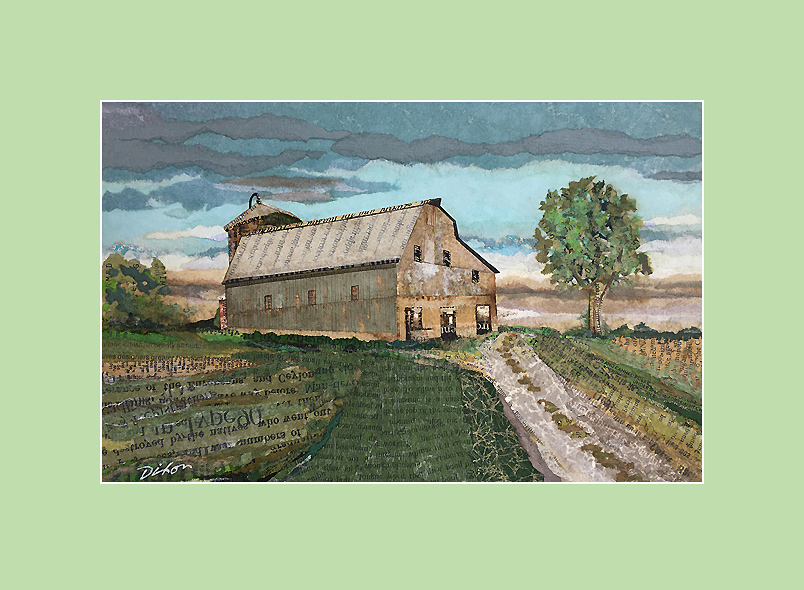
LITTER-ALLY KENTUCKY
Also available as
premium giclée prints
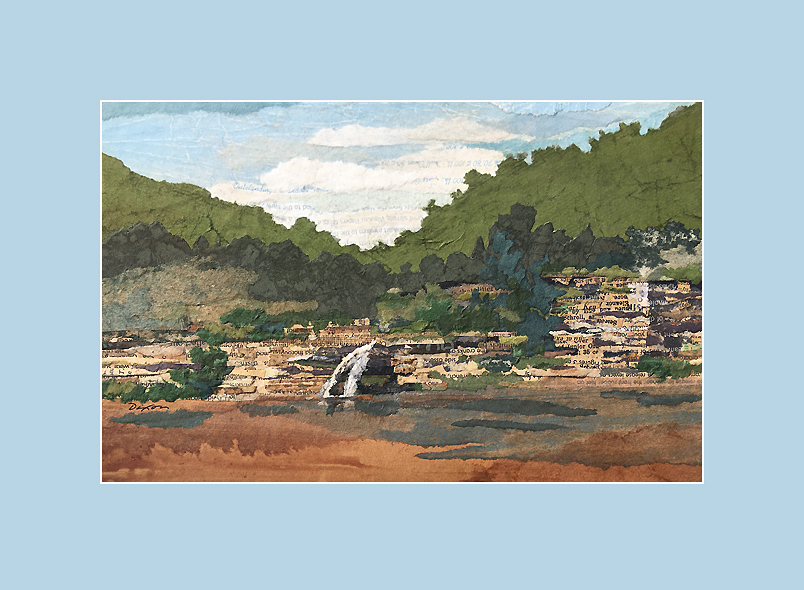
A Change of Seen
When I first took paper
and paste outside
Recent Landscapes
As I continue to focus
on “painting in papers”

LITTER-ALLY KENTUCKY
Also available as
premium giclée prints

A Change of Seen
When I first took paper
and paste outside
Nine segments from 2024 artworks of which I am still fond — aesthetic beauty within the Merz tradition continues to wrestle pictorial collage for my attention. Which approach do you favor in the coming year?
CLOCKWISE TO CENTER:
La Monda’s Refuge, Wind Harbor, Our Lady of the Cheap Shot, April Burst, Down Side Up, Unprotected Speech, War and Peace, Maybeland, Up the Channel
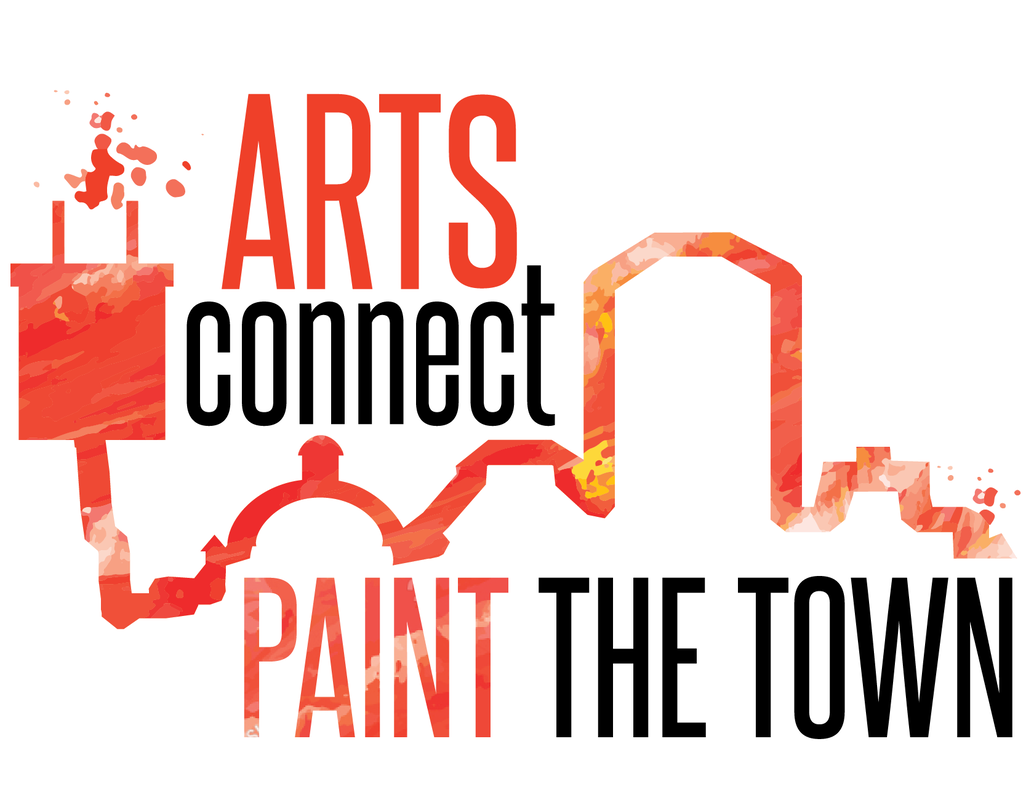 Paint the Town is an annual plein-air-oriented landscape exhibition in Lexington, Kentucky. The parameters of the traditional twelve-hour event are strict, and I’ve always had the notion of it as a flat-out competition — sort of a bass tournament for artists, if I may indulge a silly exaggeration.
Paint the Town is an annual plein-air-oriented landscape exhibition in Lexington, Kentucky. The parameters of the traditional twelve-hour event are strict, and I’ve always had the notion of it as a flat-out competition — sort of a bass tournament for artists, if I may indulge a silly exaggeration.
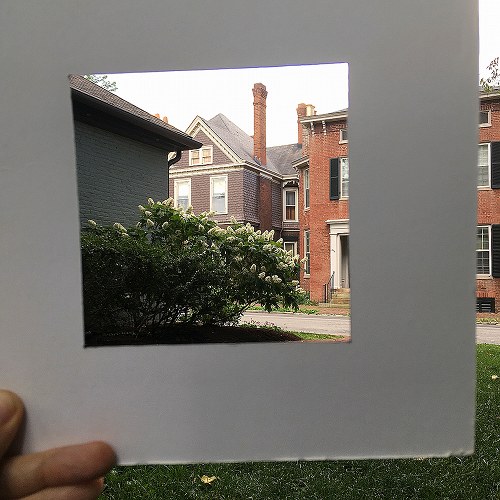 With the current societal restrictions having caused so many art shows to be postponed or cancelled, it’s a distinct credit to ARTSconnect that a way was found to make the event happen at all in 2020. The Pam Miller Downtown Arts Center reopened to host the exhibition. Many of the more stringent guidelines (and, sadly, all the hospitality enhancements) were stripped out of this year’s version.
With the current societal restrictions having caused so many art shows to be postponed or cancelled, it’s a distinct credit to ARTSconnect that a way was found to make the event happen at all in 2020. The Pam Miller Downtown Arts Center reopened to host the exhibition. Many of the more stringent guidelines (and, sadly, all the hospitality enhancements) were stripped out of this year’s version.
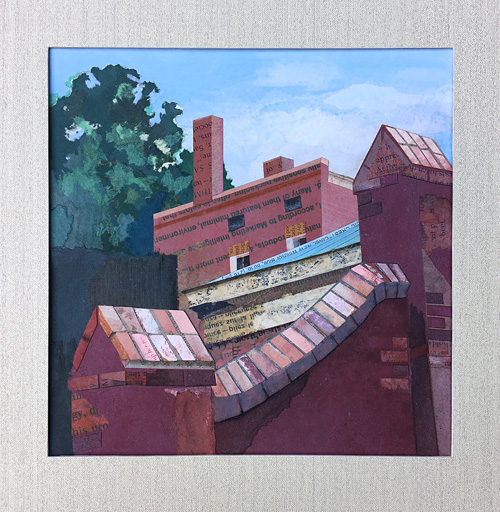 I’m willing to admit that the relaxed standards were enough to convince me to take part, not having participated in this kind of gig before. I was eager to gather what I’ve learned from my plein-air experience and “paint with paper” in the studio. The goal was to fuse the spontaneity of working outdoors with a more deliberate process that I’ve explored by using photo references to create
I’m willing to admit that the relaxed standards were enough to convince me to take part, not having participated in this kind of gig before. I was eager to gather what I’ve learned from my plein-air experience and “paint with paper” in the studio. The goal was to fuse the spontaneity of working outdoors with a more deliberate process that I’ve explored by using photo references to create 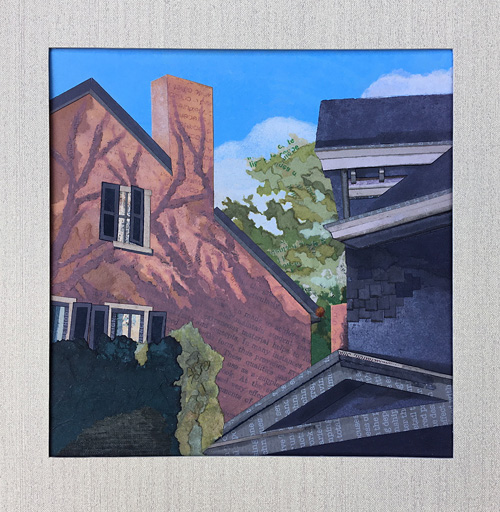 a larger landscape on panel. I can’t be more pleased with the results. I continue to incorporate white tissue for desired cloud effects, and I’ve come to rely on reclaimed teabag material as a beneficial adjunct to colored papers. I work at not overdoing tinted sealants, but the added depth is worth a cautious, mixed-media enhancement (especially when I mix acrylic gel medium with a rare portion of walnut juice from Richard Taylor).
a larger landscape on panel. I can’t be more pleased with the results. I continue to incorporate white tissue for desired cloud effects, and I’ve come to rely on reclaimed teabag material as a beneficial adjunct to colored papers. I work at not overdoing tinted sealants, but the added depth is worth a cautious, mixed-media enhancement (especially when I mix acrylic gel medium with a rare portion of walnut juice from Richard Taylor).
Please take a Virtual Tour of the show. My 90-second sound bite is included, or you can listen to the audio by clicking here. Of course, there’s a YouTube video of all the artwork, too. My two collage miniatures enjoy some great company, and it pleases me to point out that juror Bruce Neville designated Byway Corner with an Honorable Mention. Current gallery hours at the Pam Miller Downtown Arts Center are Wed/Thurs/Friday, noon to 5pm. The show lasts until August 3, 2020.
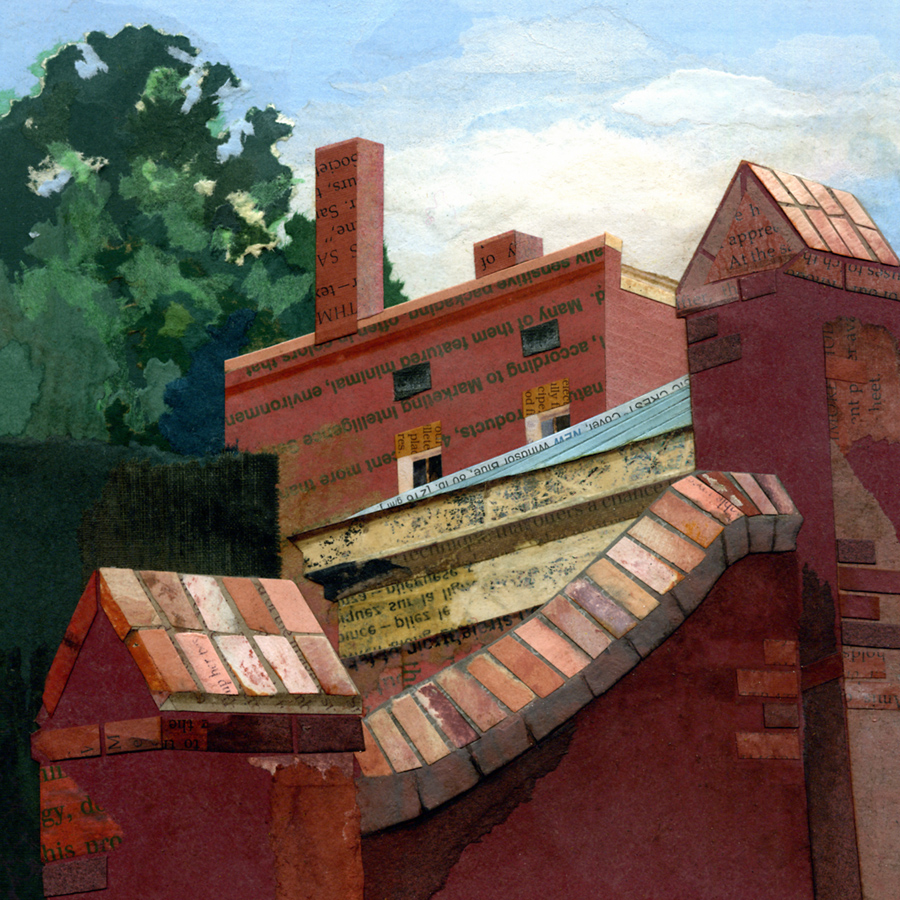
Byway Corner
collage landscape by J A Dixon
7 x 7.125 inches
available for purchase
• Honorable Mention
Along Market
collage landscape by J A Dixon
7 x 7.125 inches
available for purchase
“. . .this is what we do in the collage community: we engage, we exchange, we manifest with one another. We emerge into a new state of being together. That is what makes art powerful. It connects us and takes us into the future.”
— Ric Kasini Kadour
Any collage artist who maintains even a casual curiosity about the legacy of Kurt Schwitters has to be enthusiastic about developments in Sanquhar. As someone who employs this space to exalt the “Master of Merz” without apology, I now feel compelled to praise Ric Kasini Kadour and his worldwide call to built a Schwitters’ Army collection of collage artwork at the center for learning established by David Rushton in the Scots town. Needless to say to an audience that visits this site with an interest in all things collage, Ric has made an impressive effort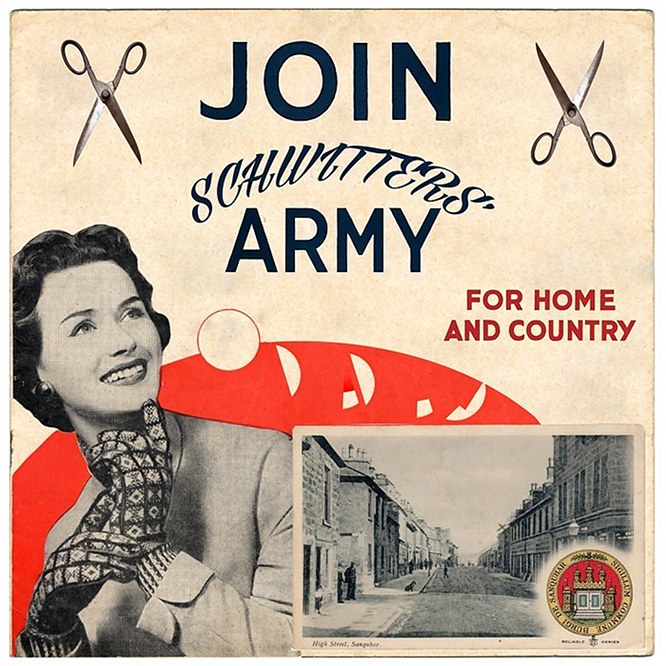 over the past few years to raise the level of discourse about a medium to which so many of us have dedicated ourselves. From Kolaj Magazine to Kolaj Institute to Kolaj Fest, he’s been making his mark for some time and clearly doesn’t intend to rest on his laurels.
over the past few years to raise the level of discourse about a medium to which so many of us have dedicated ourselves. From Kolaj Magazine to Kolaj Institute to Kolaj Fest, he’s been making his mark for some time and clearly doesn’t intend to rest on his laurels.
As part of his curatorial efforts at MERZ Gallery, he has asked contributing collage artists to answer a few questions. As I prepare to ship my donation to the cause, I’ll publish my supporting remarks here for your potential interest.
Next time: a look at the artwork and my thoughts about the context of its creation.
What is your origin story? When did you first start making collage seriously?
The first collage art that I remember creating was in the 4th or 5th grade, probably in 1961 or 1962, when I used sample chips of color from a paint store to cut and paste a mosaic-like image that won the “Poppy Day” poster contest. It’s always stood out in my memory. I thought of myself as an artist from that point forward. Nevertheless, up into high school, I would feel the lack of any competent art instruction as a keen deprivation. I convinced my parents in 1967 to enroll me as a charter student in the home-study course co-founded by Norman Rockwell called “The Famous Artists Course for Talented Young People.” Unlike the successful version for adults on which it was patterned, the package of guided assignments for teens would fail in the marketplace, but not before exposing me to a diversity of fine and applied art mediums, including collage.
Who was the first collage artist you connected with?
The Famous Artists Course would bring to my awareness many influences in the area of collage and assemblage, including Fred Otnes, Robert Rauschenberg, Louise Nevelson, Joseph Cornell, and Kurt Schwitters. Although I didn’t understand his technical methods, I initially attached my affection to the visually comprehensible Otnes, and I’d emulate his montage approach throughout my years as a professional illustrator and designer. In contrast, a series of breakthroughs in my journey to unravel the Merz of Schwitters would take another forty years, culminating in my first solo exhibition as a collage artist in 2007.
How do you connect with the collage community?
I began writing about collage and showcasing my practice at “The Collage Miniaturist” in 2012. Since then, beginning with fellow artists in Kentucky who work in the medium, I’ve collaborated with a body of dedicated collage artists. I’ve also regularly entered pieces in national and international calls for collage and submitted my work to landmark exhibitions and permanent collections. Believing that cross-pollination in collage through worldwide virtual communities is a vital force in the so-called “Post-Centennial” collage movement, I follow hundreds of active collage artists through social networks. As much as possible for someone who continues to sustain an ongoing studio and exhibition schedule, I regularly comment on trending topics and answer questions in the digital realm.
• Scottish National Gallery: Challenging the customary timeline of collage.
• Sabine Remy’s talk about her collage-a-day residency in Georgia.
• Teri Dryden’s art is rooted in collage and never left it behind.
• Investigate this open submission collage competition.
• And now, for only the most hopeless of Schwitters devotees.
My thanks to everyone responsible for all the content at these links.
“While many modern-day album artworks tend to favor strict minimalism, The Beatles make a serious case for going bold and wacky without any type of restraint.”
— Nicole Singh
As promised, I’m devoting an entry to the project that kept me out of the collage studio for at least a dozen weeks. I shall beg your forgiveness at the outset for delving into the details of a digital process. Not only has this site kept a seven-year focus on traditional cut-and-glue techniques, but I haven’t indulged the applied-arts side of my multiple personality as a graphic artist. I’m going to depart from that now — perhaps just this once — because it’s been an extraordinary circumstance for me, and a few of you may find the description worthwhile. At any rate, I encourage everyone to read Patrick Roefflaer’s article for a story that is genuinely more interesting than mine!
Not so long ago, a prominent local musician and former brass band director took me aside at an exhibition opening. Based on her recognition of my fondness for collage, she asked me if I would take on a visual homage to the Sgt. Pepper’s album cover design. The purpose would be to mark the 30th production of the Great American Brass Band Festival, held each June in our hometown of Danville, Kentucky. 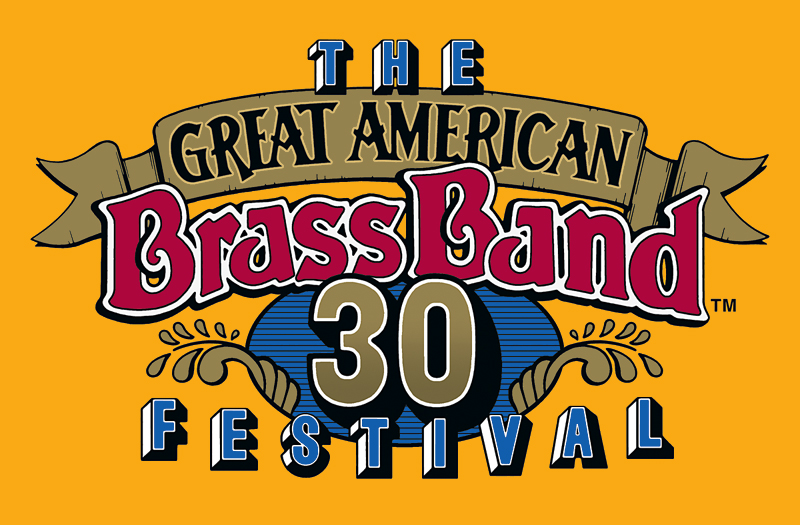 It had always been her dream to link the announcement of her retirement at the annual weekend of concerts to the classic album, with a medley of tunes arranged for brass instruments. Sadly, a severe health crisis had forced her early retirement before that could happen, but she preserved hope that a multi-discipline Beatles tribute for the festival’s upcoming milestone might happen in 2019.
It had always been her dream to link the announcement of her retirement at the annual weekend of concerts to the classic album, with a medley of tunes arranged for brass instruments. Sadly, a severe health crisis had forced her early retirement before that could happen, but she preserved hope that a multi-discipline Beatles tribute for the festival’s upcoming milestone might happen in 2019.
I’d already designed nine posters during the festival’s lifespan. To create a tenth was tempting, and this idea had a barbed hook. It really snagged me. My previous experience offered no sense of proportion about the magnitude of time to which I was committing myself when I said, “Sure.” The first obstacle was whether we were allowed to do it at all. we soon discovered that an enormous number of entities had made a visual salute to the famous image over the past fifty years, and that it had already become a ritual of pop culture, in spite of the complexities involved. There’s even a website that shows over a hundred previous parodies. Before long, we had mutually decided that it might as well be our local festival’s turn to pay homage.
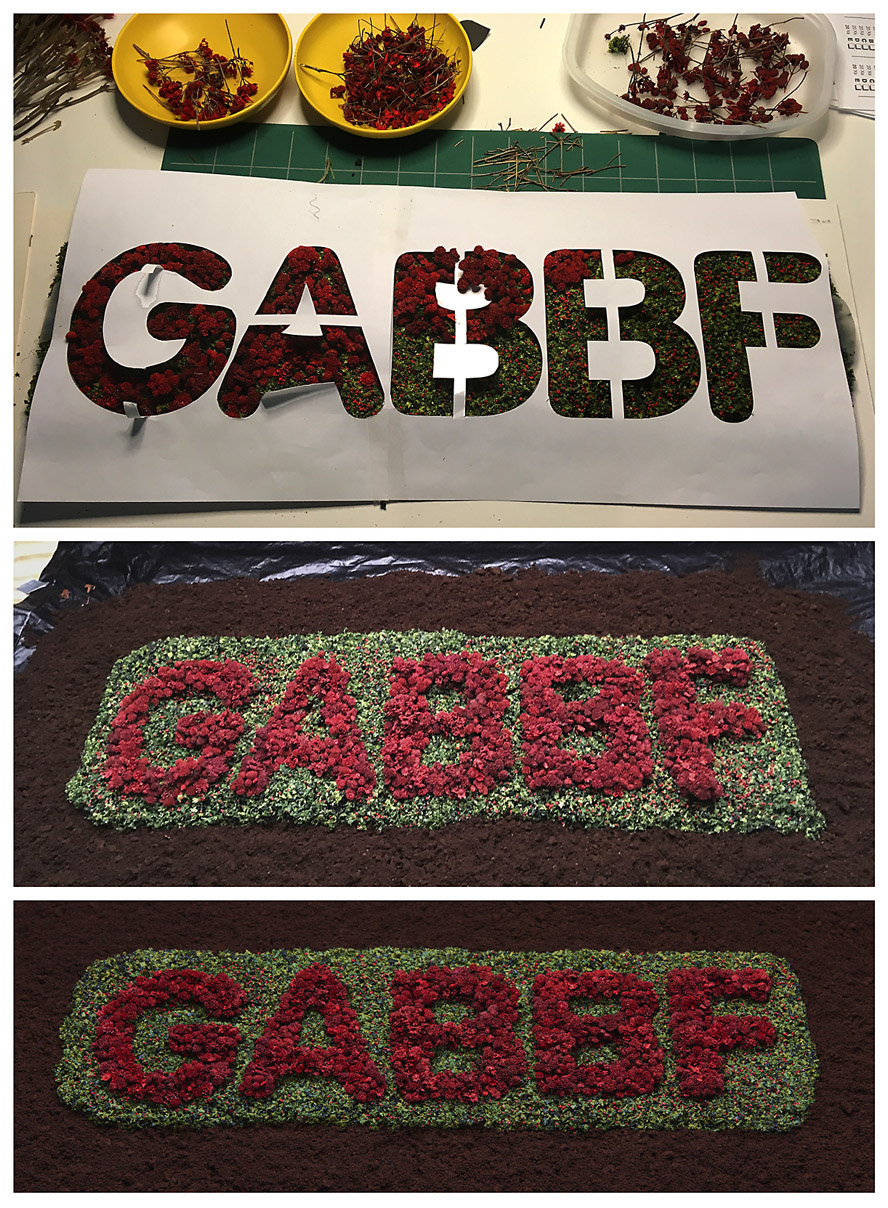 The assignment was now in my lap, and I was overwhelmed with a desire to do it justice and exceed expectations. I found inspiration in filmmakers who I admired (like John Frankenheimer or Robert Altman), because their time-consuming approach would be required for what I’d bitten off. I wanted to bring the same passion, attention to detail, and collaborative leadership to my effort. I ended up shelving all other priorities and putting a ludicrous amount of time into the project, but not without the help of many partners. First and foremost was my wife, Dana, who jumped in head first to play a key part in nearly every aspect of the creative enterprise. After getting advice from an experienced model railroader, she began crafting a miniature flower garden to display the festival acronym for a mandatory foreground allusion. More than once, she would come back to the unfinished artifact to find that its spongy base had “spit out” some of the “flowers.”
The assignment was now in my lap, and I was overwhelmed with a desire to do it justice and exceed expectations. I found inspiration in filmmakers who I admired (like John Frankenheimer or Robert Altman), because their time-consuming approach would be required for what I’d bitten off. I wanted to bring the same passion, attention to detail, and collaborative leadership to my effort. I ended up shelving all other priorities and putting a ludicrous amount of time into the project, but not without the help of many partners. First and foremost was my wife, Dana, who jumped in head first to play a key part in nearly every aspect of the creative enterprise. After getting advice from an experienced model railroader, she began crafting a miniature flower garden to display the festival acronym for a mandatory foreground allusion. More than once, she would come back to the unfinished artifact to find that its spongy base had “spit out” some of the “flowers.”
The rest of it hinged on two important elements — whether we could pull together our own “Fab Four,” and then surround them with a crowd of numerous figures. 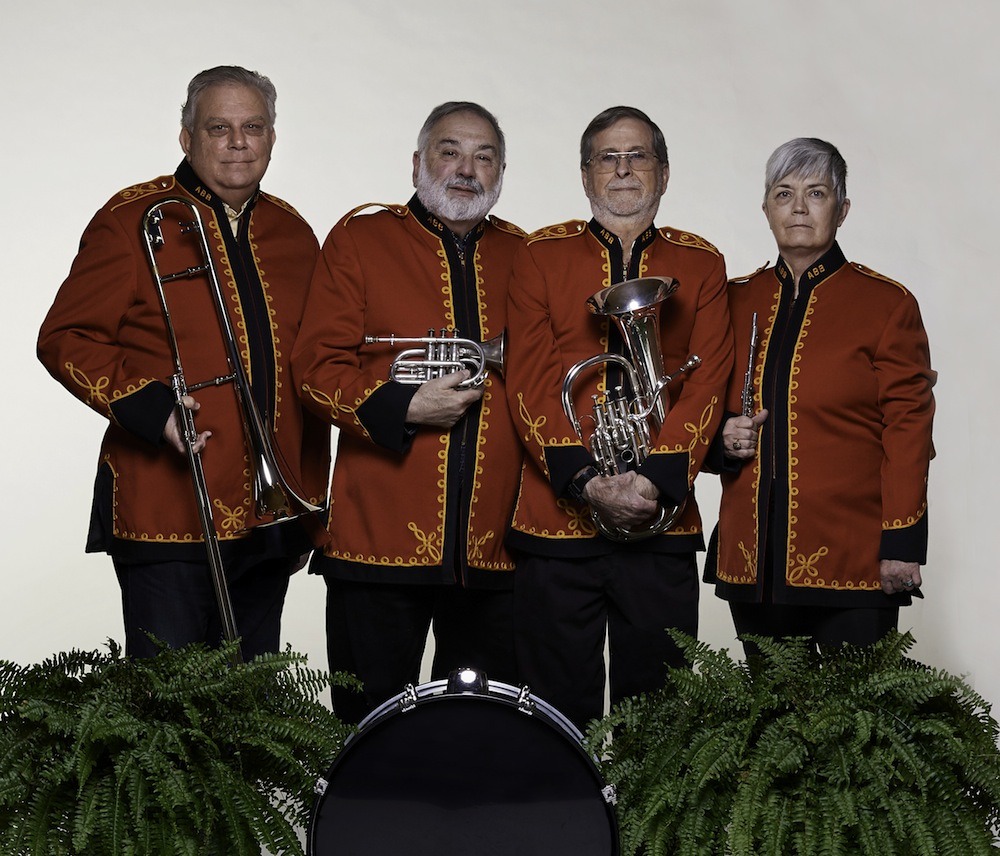 It was determined that the Beatles would be “represented” by the previous directors of the Advocate Brass Band, a Golden-Age-style band associated with every festival. Their initial formation to color a political rally in 1989 was a direct influence on the organizing of the annual event itself. This made perfect sense because the foursome would include the festival’s pair of co-founders and their band uniform jackets, although not psychedelic, would be an effective visual reference point. We immediately knew that some digital sleight of hand would be called for, since only two of the four were locally present.
It was determined that the Beatles would be “represented” by the previous directors of the Advocate Brass Band, a Golden-Age-style band associated with every festival. Their initial formation to color a political rally in 1989 was a direct influence on the organizing of the annual event itself. This made perfect sense because the foursome would include the festival’s pair of co-founders and their band uniform jackets, although not psychedelic, would be an effective visual reference point. We immediately knew that some digital sleight of hand would be called for, since only two of the four were locally present.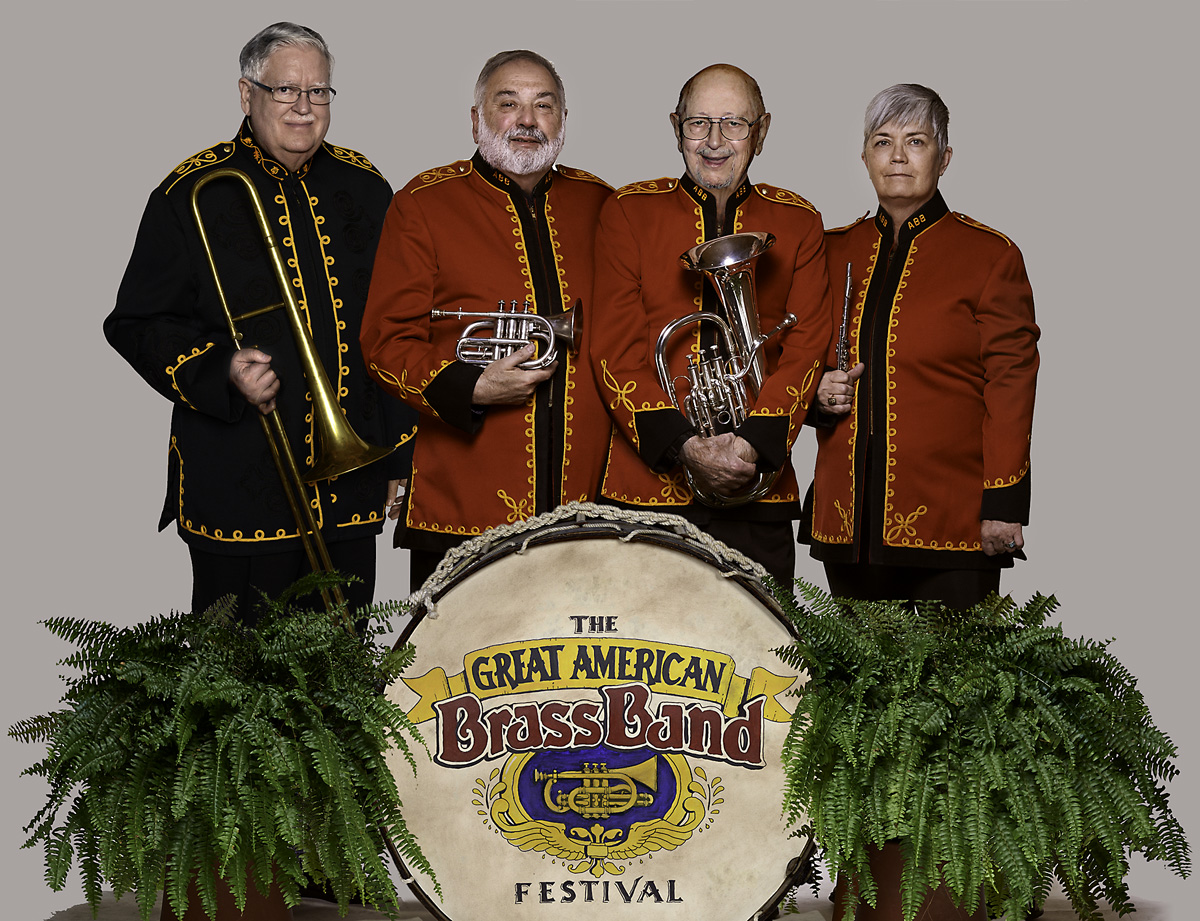 One was near a university town many counties away, and the fourth had moved to a distant state. It took lots of coordination to solve that equation, and we pulled it off with the crucial participation of my friend, photography pro Bill Griffin, who took time away from his day job of wealth management. In keeping with the guiding theme of “a little help from our friends,” getting all the ingredients for the poster art to coalesce would demand the magnanimous assistance of others — furnishing space, props, and standing in at our photo shoot, plus image research and acquisition.
One was near a university town many counties away, and the fourth had moved to a distant state. It took lots of coordination to solve that equation, and we pulled it off with the crucial participation of my friend, photography pro Bill Griffin, who took time away from his day job of wealth management. In keeping with the guiding theme of “a little help from our friends,” getting all the ingredients for the poster art to coalesce would demand the magnanimous assistance of others — furnishing space, props, and standing in at our photo shoot, plus image research and acquisition.
At a certain point, I began to focus on researching the background “crowd of fans,” to honor the countless performers, organizers, sponsors, staff, and volunteers who made three decades of festivals possible. It became a daunting, complicated task of culling and selection. I realized that the poster would be the size of a picnic table if everyone who deserved to be on it were included. The original setup by Jann Haworth and Peter Blake was peopled with life-size, hand-tinted cut-outs that imposed a certain physical limitation, and it was fabricated within two weeks. A virtual approach was too open-ended for comfort. There was a limit to how methodical I could become in choosing ingredients for the montage of faces. The solution was to approach it more intuitively, as I would any of my “maximalist” works.
All collage art worthy of the name is irrational at some level, and one of the reasons the original Beatles art is so iconic is the sheer illogic of it. And so, for us, that idea led to a few incongruous personalities, such as Carrie Nation and Howdy Doody. The final assembly was challenging, painstaking, rewarding, and fun, all at the same time. After refining the list of candidates and compiling the source files, each master image had to be sillouetted, retouched, color balanced, and optimized for inclusion. It seemed like the rearranging would never end before every element of the composition appeared to “belong.” I shall confess that I do not possess a powerhouse workstation. The increasing quantity of digital layers in Photoshop had to be continuously merged to prevent the composite file from paralyzing my Macintosh. Even so, it would often exceed 500 MB in size. I tried to save and back up as often as feasible without breaking stride, but there were periodic freezes that would result in “three steps forward and two steps back.”
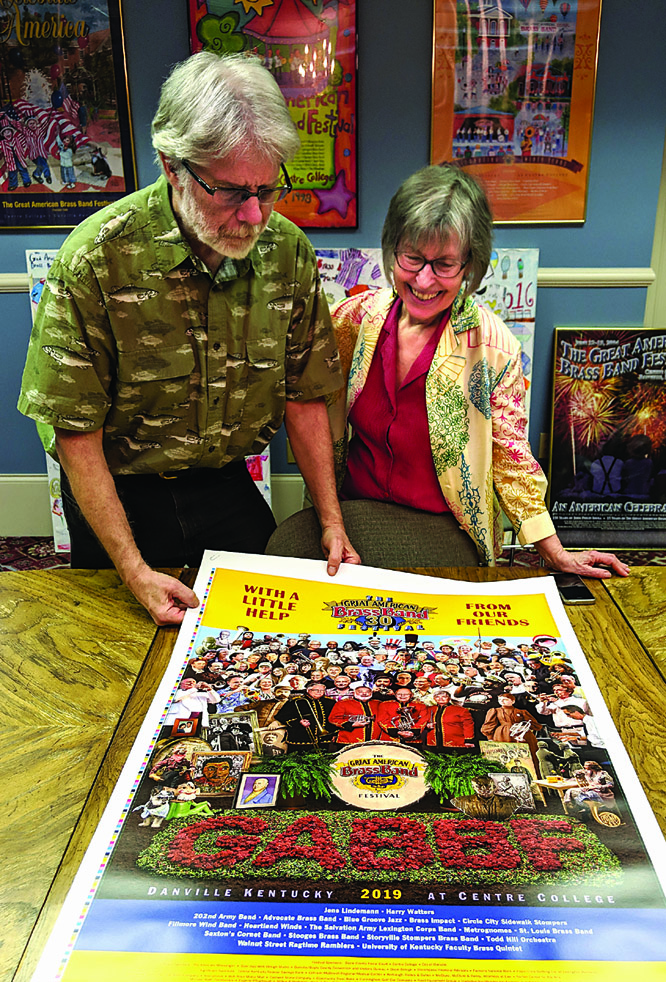 There should be no misunderstanding, however. The marathon endeavor was punctuated by many fortunate, often astonishing developments. One of our “Fab Four” individuals made a vital connection with an outstanding photographer in Athens, Georgia, who went the extra yard in matching my parameters for an important superimposition of the black-suited Dr Foreman. He also shot an antique bass drum to add another convincing Sgt Pepper’s touch — the same one that appeared on the festival’s first poster in 1990, and it still had the original, hand-painted emblem! Dana took the lead in preparing the poster “mechanical” for offset production, as she always has done for Dixon Design. She also knocked one out of the park during the solicitation of bids. As a contribution to the landmark production, Mike Abbott of Thoroughbred Printing agreed to produce the job at cost, and spent an hour with the press operator, Dana, and me, making sure we were satisfied with the quality.
There should be no misunderstanding, however. The marathon endeavor was punctuated by many fortunate, often astonishing developments. One of our “Fab Four” individuals made a vital connection with an outstanding photographer in Athens, Georgia, who went the extra yard in matching my parameters for an important superimposition of the black-suited Dr Foreman. He also shot an antique bass drum to add another convincing Sgt Pepper’s touch — the same one that appeared on the festival’s first poster in 1990, and it still had the original, hand-painted emblem! Dana took the lead in preparing the poster “mechanical” for offset production, as she always has done for Dixon Design. She also knocked one out of the park during the solicitation of bids. As a contribution to the landmark production, Mike Abbott of Thoroughbred Printing agreed to produce the job at cost, and spent an hour with the press operator, Dana, and me, making sure we were satisfied with the quality.
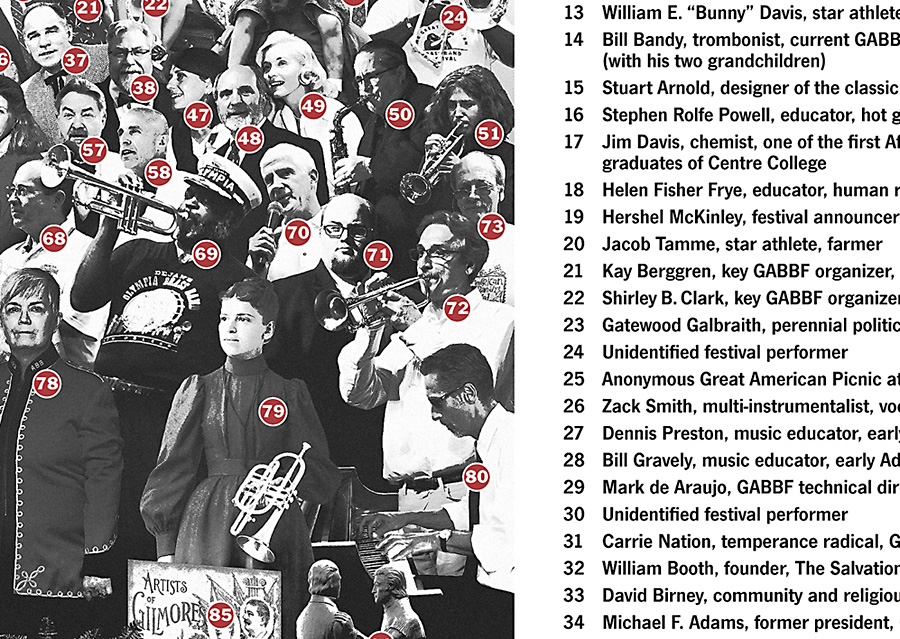 Our closing duty was to devise a printable key for identifying all the individuals and design elements. My original idea of including a longer “blurb” for each line item quickly became far-fetched when producing the abbreviated version dragged on. By the time we declared it done, the “labor of love” vibe had been exhausted. There wasn’t much love left in the air, and I just wanted all of it to hit the street, which it has, of course, and the positive response has been even more than I anticipated.
Our closing duty was to devise a printable key for identifying all the individuals and design elements. My original idea of including a longer “blurb” for each line item quickly became far-fetched when producing the abbreviated version dragged on. By the time we declared it done, the “labor of love” vibe had been exhausted. There wasn’t much love left in the air, and I just wanted all of it to hit the street, which it has, of course, and the positive response has been even more than I anticipated.
This post is already far too long, so I won’t get started on my Eva Marie Saint story, but I need to explain why we included a picture of the creators, and then I’ll finish up on an appropriate collage note. I was adamant that I would not fall prey to the Hitchcock Urge. I had no interest in, nor justification for, inserting myself, since I was making so many brutal choices to leave others on the cutting room floor. Dana was in total agreement, but the team of people who helped with the proofing process took an opposing viewpoint. Their collective drum beat was that the final rendition must include us! You can see that we eventually waved the white flag and stuck a small portrait on top of the Bourbon barrel.
A tiny figure seated at a kitchen table was provided by the Great American Dollhouse Museum as a nod to the Shirley Temple doll in the original composition, which also featured a Madame Tussauds wax figure of Sonny Liston on the opposite side. I knew there had to be a way to include Kentucky’s own Muhammed Ali in our version. Rather than take unavailable time to solicit permission to use a photograph that might get buried in the sea of faces, I turned to my friend Robert Hugh Hunt, who kindly let us insert the extraordinary collage portrait from his 20th Century Icons series!
Oh, I get by with a little help from my friends!
30th GABBF Poster
digital homage by Dana and John A Dixon
24 x 36 inches
Purchase one now!
Online order page includes a printable key to identification,
plus a ‘special thank you’ to all our essential collaborators!
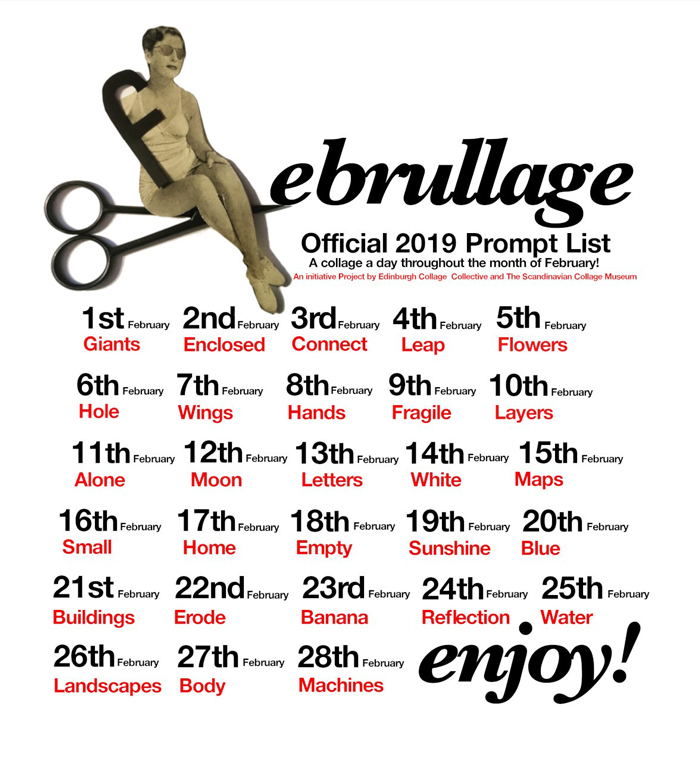 Today is the commencement of Februllage, a month-long, collage-a-day initiative of Edinburgh Collage Collective and The Scandinavian Collage Museum. I’ll be keeping my eye on the Instagram-centered project. There’s already an overwhelming flurry of creative activity, and I intend to jump in sporadically when a daily ‘prompt word’ ignites. I have more than enough studio obligations to fill my winter calendar, but it’s always important to keep the pump primed. March has been my favored month for tackling a collage-per-day ritual, and the exercise has always proved rewarding. Take a look at my first one in 2013, and please stop back to see how the Februllage challenge shapes up here.
Today is the commencement of Februllage, a month-long, collage-a-day initiative of Edinburgh Collage Collective and The Scandinavian Collage Museum. I’ll be keeping my eye on the Instagram-centered project. There’s already an overwhelming flurry of creative activity, and I intend to jump in sporadically when a daily ‘prompt word’ ignites. I have more than enough studio obligations to fill my winter calendar, but it’s always important to keep the pump primed. March has been my favored month for tackling a collage-per-day ritual, and the exercise has always proved rewarding. Take a look at my first one in 2013, and please stop back to see how the Februllage challenge shapes up here.
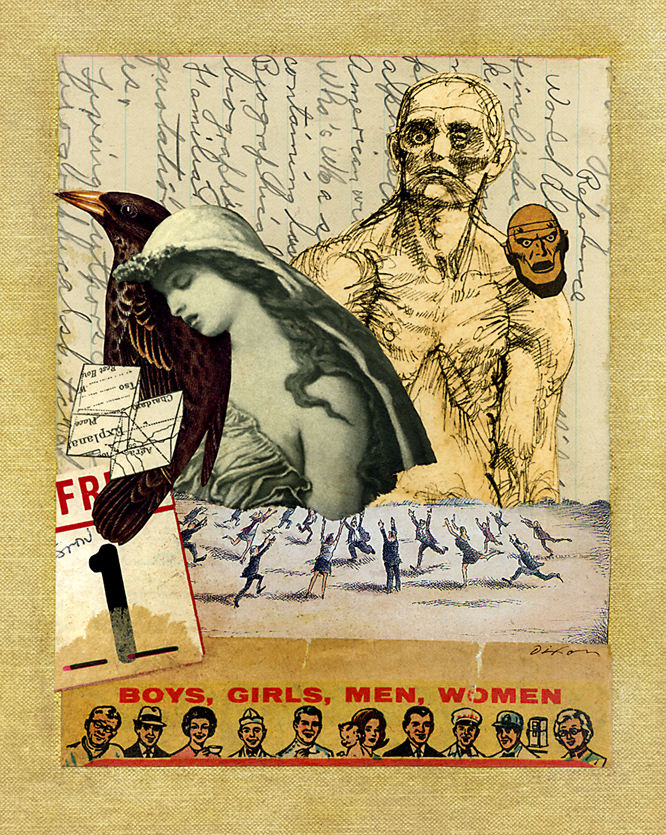
Untitled (giants)
collage experiment by J A Dixon
6 x 7.75 inches
for Februllage 2019
• Litch’s ‘Manifesto” — good, unpretentious stuff from a working artist.
• Save this link to keep an eye on Plastikcomb, or to submit content.
• Everything one could want to know about Merzbau.
• Appreciating KS as a hero of the mind.
My thanks to everyone responsible for the outstanding content at these links.
The Edinburgh Collage Collective has made a splash in the international collage scene over the past couple years, and it closed out 2018 with its Cut & Post project. The Collective and collage artist Mark Murphy, along with guest jurists, collaborated to select a group of finalists from postcard-based collage artworks submitted from around the world in order to produce a limited edition set of collector cards. Organizers told Kolaj Magazine that they “featured a wide range of submitted works on social media and showcased as many postcard collages as possible, demonstrating the diverse visual responses and interpretations.” According to the publication, “the project joins a list of strategies collage artists are using to curate and disperse collage outside of the gallery exhibition format.” With over 1400 individual pieces of work electronically submitted, the project sponsors admit to being “completely overwhelmed by the response.” There is talk of exploiting the body of accumulated images beyond the original scope of the open submission.
Below are five experimental pieces that I created for the submission. I also included two previous collage artworks with postcard ingredients among the total seven image files that I sent to Edinburgh for consideration, but none of them made the project’s “first cut.” I shall keep my fingers crossed and look ahead to new initiatives from a city shaping up to be a world center for the medium. (More about that next year!)
Five experimental post cards that I submitted to the ‘Cut & Post’ project that was based in Edinburgh, Scotland
• Collage is painting, so Cinta can inform and inspire collage.
• Many of us wanted to stow ourselves in Teri’s art-supply case.
• I’ve lost count of all the things I admire about Sheldon’s artistry.
• Cecil: The “spectacularness” of the harmony of all things.
• The opposite of collage — two solid hours of Wesley at work.
My thanks to everyone who created these featured videos.
Sharing a major announcement in the world of collage and assemblage: The Ontological Museum has undertaken an entire makeover of its online archives. Let all doff their hats to Cecil Touchon!
Beware — connoisseurs of the collage medium can be swept into this magnificent black hole of imagery. Just a few outstanding examples are featured below.
The Sun Always Shines on TV
collage artwork by Cory Peeke, 2010
7 am
collage artwork by Joan Schulze, 2010
Ritual 2
mixed-media collage by Svetlana Pesetskaya, 2011
Case #10
small things by Hope Kroll for Fluxcase Micro Museum, 2011
(title unknown)
mixed-media collage on paper by Denise Pitchon, 2012
Queen Rose Score
collage on paper by Matthew Rose, 2012
(title unknown)
collage for Dada Centennial by Bob Rizzo, 2016
Homage to Merzbau
collage artwork by Sabine Remy, 2016
(title unknown)
asemic collage on paper by Jim White, 2018
(images courtesy of The Ontological Museum)